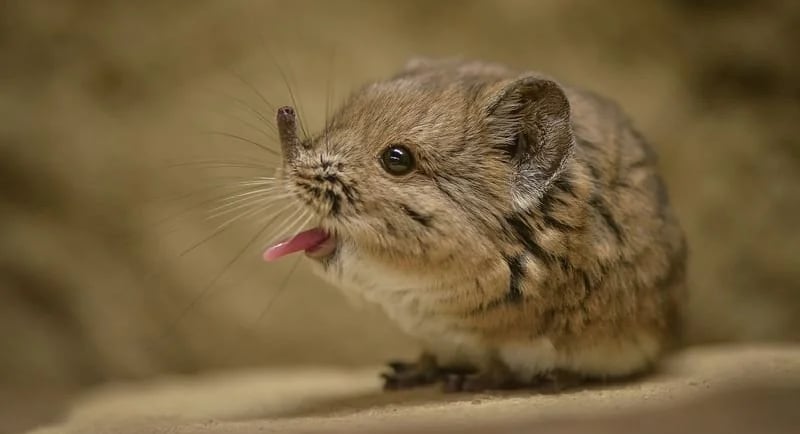The Speedy Sniffer-The Elephant Shrew
Wellcome into the marvelous world of animals with the Animal Story Folders 🦝🦋🐾, my favourite material found in the Biology chapter Introducing Animals! 🌿 These folders are designed to ignite curiosity and prepare children for independent research. Through engaging oral presentations and beautifully organized folders, children explore essential topics like animal names, habitats, diets, physical features, reproduction, life cycles, and predators. This material provides a foundation for critical research skills while fostering a deep connection to the animal kingdom. Whether it’s uncovering the secrets of a raccoon’s night vision 🦝, a butterfly’s life cycle 🦋, or the survival tactics of a snow leopard 🐆, these folders encourage children to ask questions and seek answers.🐾📚
BIOLOGY STORIES
12/2/20243 min read


Imagine the sun rising over the dry, rocky deserts of southern Africa 🌅. The ground is dotted with shrubs and scattered rocks, and you see a tiny creature darting across the sand like a flash of light ⚡. With its long, flexible nose and big round ears, the elephant shrew (Macroscelides proboscideus) is one of nature’s fastest and most fascinating animals! Its scientific name, derived from Greek and Latin, means “long-legged, long nose,” perfectly describing its unique features.
Despite its name, the elephant shrew isn’t related to elephants or shrews! Instead, it belongs to a special group of mammals called sengis. These creatures are sometimes called "living fossils" because they’ve existed for millions of years with very little change. Sengis are nocturnal, preferring to avoid the desert heat by becoming active during the cooler evenings and nights 🌙
Living in deserts and rocky areas 🌵, the elephant shrew is a master of survival. Its sandy-colored fur blends perfectly with the dry ground, making it hard for predators like snakes 🐍 and birds 🦅 to spot. It spends its time searching for food, using its sensitive nose to sniff out insects 🐜, spiders 🕷️, and even small seeds 🌱. This variety in its diet helps it adapt to the scarce resources of the desert.
One of the most fascinating things about the elephant shrew is its “runways.” It clears paths through the grass and bushes, creating secret trails to quickly escape danger or find food 🌿. These paths are like tiny highways that only the elephant shrew knows how to navigate, with its long legs and incredible speed—up to 28 km/h (17 mph) making it almost impossible to catch.
Elephant shrews communicate with soft clicking sounds and scent markings, which they use to keep their territories and locate their partners. It's like leaving their unique parfume here and there in the environment. Unlike many other small mammals, elephant shrews form lifelong bonds with a single partner ❤️. Together, they protect their territory and raise their young in a cozy burrow hidden among rocks and shrubs. Their babies, born fully furred and with their eyes open, quickly learn to hunt and dash through the desert with their parents.
These clever creatures also play an important role in their ecosystem. By eating insects and spreading seeds, they help maintain the delicate balance of life in their desert habitat 🌍. With its long nose, lightning-fast legs, and clever mind, this happy elephant shrew is truly one of nature’s little wonders.
📜 Scientific Name: Macroscelides proboscideus
📏 Order: Macroscelidea
🌳 Family: Macroscelididae
📐 Average Size: 10–12 cm (4–5 inches), with a tail almost as long as its body
⚖️ Average Weight: 40–60 grams (1.4–2.1 ounces)
🕰️ Lifespan: Up to 4 years in the wild
✨ Unique Feature: Long, flexible nose for sniffing out food and lightning-fast running speeds
Let's see what else we can find in this Animal Folder about The Elephant Shrew
Now that we’ve discovered so many amazing things about the elephant shrew, I wonder—what’s your favorite animal? 🐾 Maybe it’s one you already know a lot about, or perhaps there’s an animal you’ve always wanted to learn more about.
You can use what we’ve done today as your guide to create your very own animal folder or booklet 📚! Think about including details like the animal’s name, where it lives, what it eats, its unique features, and its predators. You can add drawings, fun facts, or even tell a story about your animal!
When you’re done, you can share your folder or booklet with us. We can all learn something new from your research, and you’ll be the expert on your favorite animal! 🌍✨ So, with what animal you will go on adventure research ?
After introducing one animal folder and demonstrating how to work with the cards in the folder—discussing what can be seen in the photos, reading the text cards, and matching them to the correct images. I will point out the rest of the animal folders, usually 4–5 additional folders with different animals . They will have the opportunity to read the kickoff stories, to examine the photos, read the text cards, and match them on their own, deepening their understanding through their independent explorations with this material in the Biology shelf. This approach fosters observation, reading, and research skills while allowing each child to follow their own interests and creativity.
With Montessori joy,
Vanina 😊

